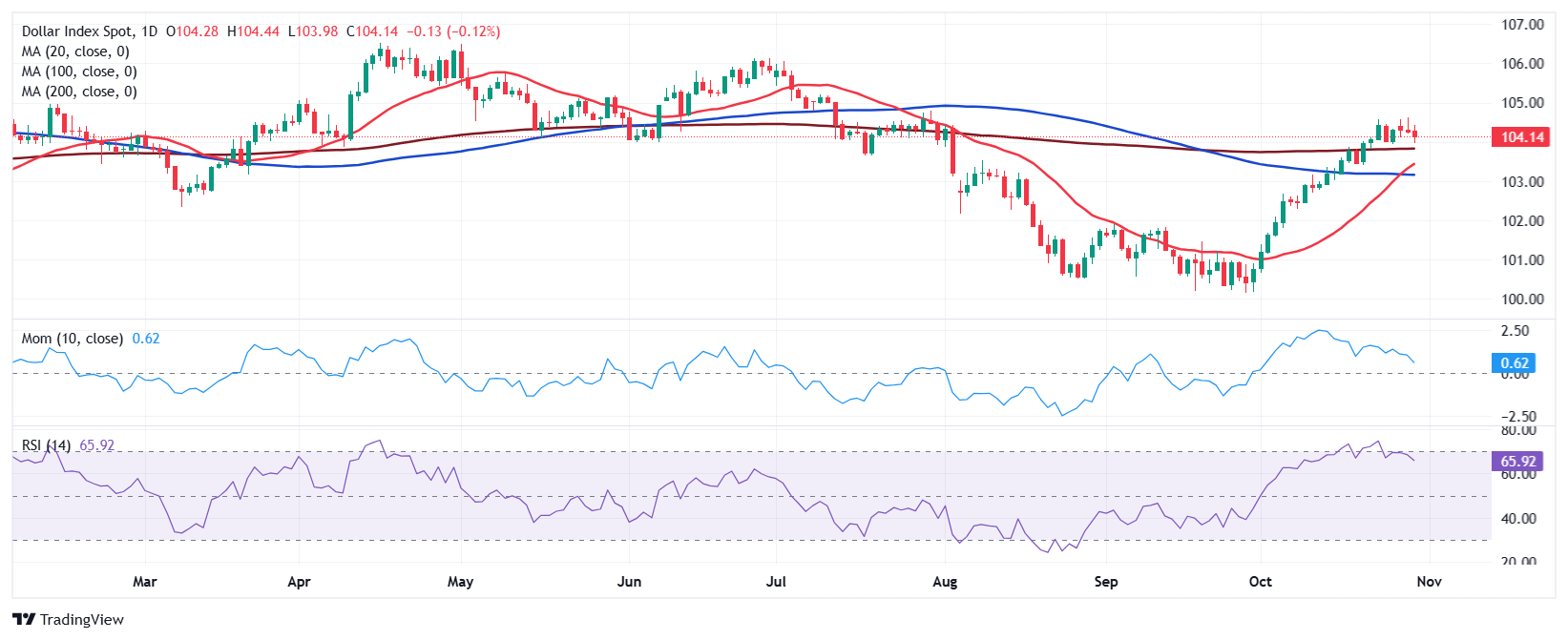NFP is the acronym for the Nonfarm Payrolls report, a compilation of data reflecting the employment situation in the United States (US). It shows the total number of paid workers, excluding those employed by farms, the federal government, private households and nonprofit organisations.
The headline figure, expressed in thousands, is an estimate of the number of new jobs added (or lost, if negative) in a given month.
But the report also includes the country’s Unemployment Rate, the Labor Force Participation Rate (or how many people are working or actively seeking a job compared to the total population) and Average Hourly Earnings, a measure of how wages increase or decrease month over month.
Why is NFP important for Forex markets?
The Forex (FX) markets pays extra attention to the US macroeconomic figures, as they reflect the health of the world’s largest economy. Employment data is particularly relevant due to the Federal Reserve's (Fed) mandate. “The Fed's modern statutory mandate, as described in the 1977 amendment to the Federal Reserve Act, is to promote maximum employment and stable prices. These goals are commonly referred to as the dual mandate,” according to the central bank itself.
Generally speaking, a solid increase in job creation coupled with a low Unemployment Rate is usually seen as positive for the US economy and, hence, the US Dollar (USD). On the contrary, fewer-than-expected new jobs tend to hurt the US Dollar.

However, nothing is written in stone in the FX market.
Ever since the Coronavirus pandemic, markets’ dynamics have changed. The overextended lockdowns and the subsequent reopenings had an unexpected effect: soaring global inflation.
As prices increased fast, central banks had no choice but to lift interest rates, as doing so helps to tame inflation. Higher rates make it more difficult to borrow money, reducing the demand for goods and services from households and companies and thus keeping prices at bay.
Interest rates reached multi-decade peaks in 2022-2023 and economies cooled. But inflation took long to recede. In fact, most major economies are still seeing how prices grow by more than what central bankers would like to.
In the case of the US, the Fed’s goal is for prices to grow at an annual pace of around 2%. Despite having retreated from the highs posted in mid-2022, price pressures remain above desired.
Ahead of the announcement, the US released a couple of relevant reports. On the one hand, the ADP report on private job creation showed the sector added 233,000 new positions in October, more than doubling expectations.
Additionally, Real Gross Domestic Product (GDP) increased at an annual rate of 2.8% in the third quarter, according to the advance estimate released by the US Bureau of Economic Analysis (BEA). Finally, and also according to quarterly estimates, there was a modest uptick in inflationary pressures, according to Personal Consumption Expenditures (PCE) Price Index. The core PCE price index increased 2.2%, slower than the 2.8% rise in the previous quarter but above the 2.1% expected.
The figures were not as encouraging as expected but fell short of being enough to twist the Fed’s hand. The NFP report, however, could do it.
But what does employment have to do with the Fed?
Keeping unemployment subdued is also part of the Fed’s mandate, but a strong labor market usually translates into higher inflation. The Fed is in a tough balancing act: controlling inflation can mean more job losses, while a very strong economy can mean higher inflation.
The Chairman of the Fed, Jerome Powell, has long said the central bank needs a “weaker” labor market, meaning that the economy creates fewer jobs, to trim interest rates.
The US economy has consistently performed very well since the pandemic, creating plenty of jobs month after month. Even though this seems a desirable situation for the country, the Fed read it as a potential risk to inflation. To tame price pressures, US policymakers kept interest rates high for as long as possible.
Finally, the Fed decided to trim interest rates, delivering a 50 basis points (bps) rate cut in September. The announcement brought relief to financial markets, which now see borrowing costs going further down in the upcoming months. As a result, investors seek high-yielding assets, opposite to the safe-haven US Dollar.
Investors feared the Fed would deliver more aggressive 50 bps interest rate cuts to rush towards a neutral rate to avoid an economic setback.

What to expect from the October NFP report?
Nevertheless, the September NFP report showed that the US economy created 254,000 new jobs in the month, while the Unemployment Rate was confirmed at 4.1%. The US Dollar initially fell after the news but quickly trimmed losses and posted gains that day, as speculative interest understood the economy is in much better shape than initially feared. Market players now believe the Fed would respond to it by trimming the benchmark interest rate by a smaller 25 basis points (bps) from then on.
For October, economists expect the US economy to have created 113,000 new positions, sharply down from the 254,000 jobs created in September. The Unemployment Rate is foreseen at 4.1%, unchanged from the previous month.
If that’s the case, financial markets will likely welcome the steady job creation without considering a potential impact on the upcoming Fed’s meeting, taking place on November 6-7.
An NFP report showing fewer jobs than expected could spur concerns about the labor market’s performance.
Hence, the USD will then fall.
Finally, a report indicating solid job creation should hint at a more modest 25 bps trim in interest rates.
In this scenario, the USD could take advantage of such figures.
As always regarding macroeconomic data, the divergence between expectations and the actual result will determine the strength of directional movements across the FX board.
The more significant the deviation, one way or the other, the wider the market reaction. Either extremely upbeat or shocking poor readings will exacerbate the directional movements.
Nonfarm Payrolls FAQs
Nonfarm Payrolls (NFP) are part of the US Bureau of Labor Statistics monthly jobs report. The Nonfarm Payrolls component specifically measures the change in the number of people employed in the US during the previous month, excluding the farming industry.
The Nonfarm Payrolls figure can influence the decisions of the Federal Reserve by providing a measure of how successfully the Fed is meeting its mandate of fostering full employment and 2% inflation. A relatively high NFP figure means more people are in employment, earning more money and therefore probably spending more. A relatively low Nonfarm Payrolls’ result, on the either hand, could mean people are struggling to find work. The Fed will typically raise interest rates to combat high inflation triggered by low unemployment, and lower them to stimulate a stagnant labor market.
Nonfarm Payrolls generally have a positive correlation with the US Dollar. This means when payrolls’ figures come out higher-than-expected the USD tends to rally and vice versa when they are lower. NFPs influence the US Dollar by virtue of their impact on inflation, monetary policy expectations and interest rates. A higher NFP usually means the Federal Reserve will be more tight in its monetary policy, supporting the USD.
Nonfarm Payrolls are generally negatively-correlated with the price of Gold. This means a higher-than-expected payrolls’ figure will have a depressing effect on the Gold price and vice versa. Higher NFP generally has a positive effect on the value of the USD, and like most major commodities Gold is priced in US Dollars. If the USD gains in value, therefore, it requires less Dollars to buy an ounce of Gold. Also, higher interest rates (typically helped higher NFPs) also lessen the attractiveness of Gold as an investment compared to staying in cash, where the money will at least earn interest.
Nonfarm Payrolls is only one component within a bigger jobs report and it can be overshadowed by the other components. At times, when NFP come out higher-than-forecast, but the Average Weekly Earnings is lower than expected, the market has ignored the potentially inflationary effect of the headline result and interpreted the fall in earnings as deflationary. The Participation Rate and the Average Weekly Hours components can also influence the market reaction, but only in seldom events like the “Great Resignation” or the Global Financial Crisis.
Information on these pages contains forward-looking statements that involve risks and uncertainties. Markets and instruments profiled on this page are for informational purposes only and should not in any way come across as a recommendation to buy or sell in these assets. You should do your own thorough research before making any investment decisions. FXStreet does not in any way guarantee that this information is free from mistakes, errors, or material misstatements. It also does not guarantee that this information is of a timely nature. Investing in Open Markets involves a great deal of risk, including the loss of all or a portion of your investment, as well as emotional distress. All risks, losses and costs associated with investing, including total loss of principal, are your responsibility. The views and opinions expressed in this article are those of the authors and do not necessarily reflect the official policy or position of FXStreet nor its advertisers. The author will not be held responsible for information that is found at the end of links posted on this page.
If not otherwise explicitly mentioned in the body of the article, at the time of writing, the author has no position in any stock mentioned in this article and no business relationship with any company mentioned. The author has not received compensation for writing this article, other than from FXStreet.
FXStreet and the author do not provide personalized recommendations. The author makes no representations as to the accuracy, completeness, or suitability of this information. FXStreet and the author will not be liable for any errors, omissions or any losses, injuries or damages arising from this information and its display or use. Errors and omissions excepted.
The author and FXStreet are not registered investment advisors and nothing in this article is intended to be investment advice.
Recommended Content
Editors’ Picks

Gold price extends fresh record run toward $3,500
Gold price continues to build on its record rally, closing in on the $3,500 mark in Asian trading on Tuesday. Investors continue to flock to safety in the traditional store of value, the Gold price, amid no confidence in the US Dollar and Trump’s attacks on Fed Chairman Powell.

AUD/USD bounces back toward 0.6450 as US Dollar resumes downside
AUD/USD picks up fresh bids toward 0.6450 in the Asian session on Tuesday. The US Dollar fizzles its bounce and resumes downside amid uncertainty over Trump's trade policies and the weakening confidence in the US economy. Concerns about the rapidly escalating US-China trade war could act as a headwind for the Aussie.

USD/JPY mires in multi-month low near 140.00
USD/JPY languishes in seven-month lows near 140.00 in the Asian session on Tuesday. Trade war concerns, global recession fears, hopes for a US-Japan trade deal, and the divergent BoJ-Fed bets could continue to underpin the Japanese Yen while the US Dollar selling resumes.

ARK Invest integrates Canada's 3iQ Solana Staking ETF into its crypto funds
Asset manager ARK Invest announced on Monday that it added exposure for Solana staking to its ARK Next Generation Internet exchange-traded fund and ARK Fintech Innovation ETF through an investment in Canada's 3iQ Solana Staking ETF.

Five fundamentals for the week: Traders confront the trade war, important surveys, key Fed speech Premium
Will the US strike a trade deal with Japan? That would be positive progress. However, recent developments are not that positive, and there's only one certainty: headlines will dominate markets. Fresh US economic data is also of interest.

The Best brokers to trade EUR/USD
SPONSORED Discover the top brokers for trading EUR/USD in 2025. Our list features brokers with competitive spreads, fast execution, and powerful platforms. Whether you're a beginner or an expert, find the right partner to navigate the dynamic Forex market.